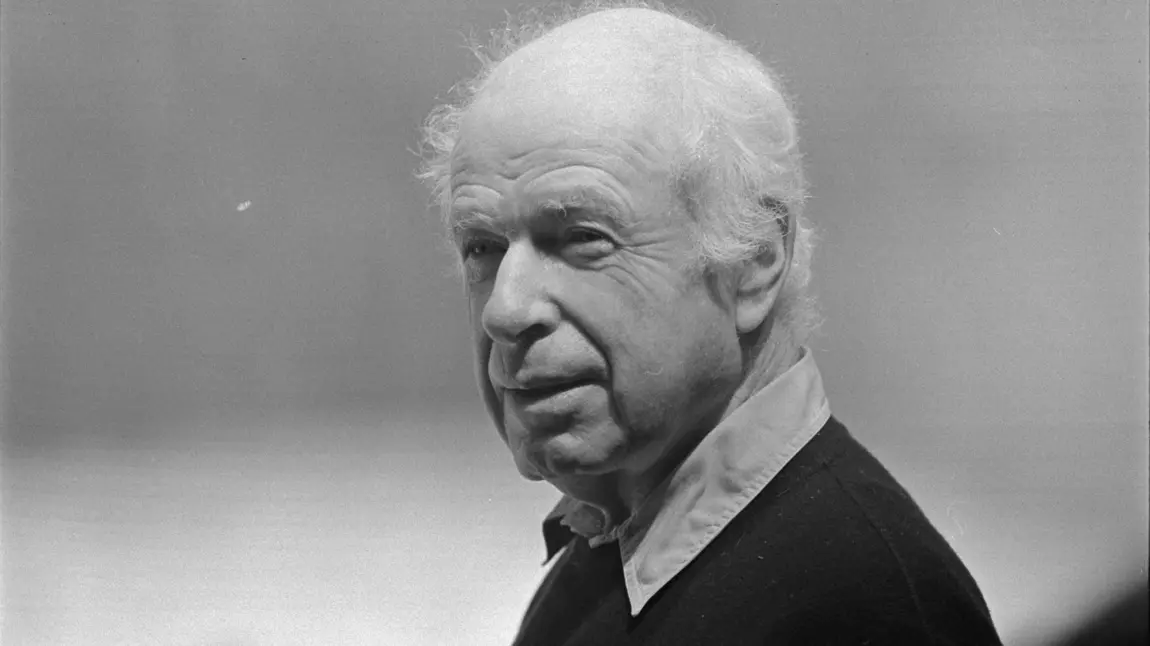V&A acquires personal papers of Britain’s greatest living theatre director, Peter Brook

Nicholas Hytner, Director of the National Theatre, has said of Peter Brook: “Everybody in the UK, not just the performance world, owes a debt of gratitude to Peter Brook, who often at considerable cost to himself has continually challenged ideas about identity, culture and the meaning of human existence. He has worked tirelessly as a director, teacher, provoker, popular educator and has always been generous with time and ideas to younger colleagues.”
The personal papers document his life and work since childhood and contain correspondence with key theatrical and cultural figures including J.B Priestley, Vivien Leigh, Samuel Beckett, Ted Hughes, Peter Hall, Harold Pinter, Laurence Olivier, Michael Tippett and Tennessee Williams; as well as an extraordinary collection of photographs and drawings made by Brook during the course of his research.
Brook’s diaries, drafts of scripts and books, and rehearsal and planning notes for some of his most famous productions offer a unique insight into the working processes and reflections of one of Britain’s greatest living directors and reveal his incredible contribution to Britain's literary, theatrical and cinematic heritage over six decades.
The collection is also of a wider importance to Britain’s socio-cultural heritage, as Brook’s career mirrors many of the tumultuous changes to British society since the Second World War. His productions such as Conference of the Birds (1974), Mahabharata (1985) and Tierno Bokar (2004) are crucial investigations into the nature of myth, religion, cultural change and human creativity. As such they are recognised as milestones in the exploration of religious tolerance and the human condition in the period after the defeat of totalitarianism in 1945.
Peter Brook said: “I am delighted that my personal collection that includes my personal papers will be preserved in the national collection of Theatre and Performance at the V&A and will be accessible to students, researchers, practitioners and theatre-going public. The museum was founded with a purpose to inspire talent and creativity and it is important to me that these papers which preserve something of the most ephemeral of art forms, will be made available to future generations of theatre makers.”
Kate Dorney, V&A Curator of Theatre and Performance, said: “Peter Brook’s work has had a major impact on British culture and we are delighted that he has chosen the V&A as the home for his incredible collection of personal documents. Brook used the V&A’s collections to research his early opera productions and now Brook’s work will be available to study and inspire future productions.”
Sue Bowers, Head of HLF, London, said: “Peter Brook is widely acknowledged as Britain’s greatest and most influential living director. We are delighted to support the V&A’s acquisition of his papers and a learning programme to create an unrivalled source of creative inspiration for academics, drama students and practitioners in theatre design.”
Peter Brook (b.1925) has been producing, directing and adapting ground-breaking and memorable plays, films and opera that have had a huge impact on British culture for over 65 years. They include the film of William Golding's The Lord of the Flies (1963); Titus Andronicus, starring Vivien Leigh and Laurence Olivier (Shakespeare Memorial Theatre, 1955); Salome, designed by Salvador Dali (Royal Opera House, 1949); Marat/Sade (Aldwych Theatre, 1964); US (Aldwych Theatre, 1966); Oedipus, translated and adapted by Ted Hughes (1968, National Theatre); and A Midsummer Night's Dream (Royal Shakespeare Theatre, 1970). The making and reception of all these productions are documented in Brook’s collection through letters, drawings, photographs and notes.
Brook’s publication, The Empty Space (1968), a meditation on theatre and ritual, had a profound effect on counter-culture and subsequent ideas about performance, architecture, planning and social interaction. It has been in print ever since it was first published and is a core text for drama and performance studies at all levels. Brook’s work is an important bridge to understanding the many facets of experimental European theatre; his studies and collaborations with key European practitioners changed the shape of 20th-century British theatre.
The V&A will rehouse and catalogue the material to make it available to practitioners, researchers and students at the Museum’s Theatre and Performance study centre in Kensington Olympia. Selected material from the collection will be digitised and made available on the V&A’s online 'Search the Collections' database. The HLF have also funded a structured programme of learning and outreach activities which will be undertaken in 2015-2016 in partnership with local schools, theatres and museums across London.
Notes to editors
The purchase of the Peter Brook personal collection was arranged by archives and manuscripts consultant, Joan Winterkorn and was funded by a £690,000 grant from HLF and a private donor.
About the V&A’s Theatre and Performance Collection
The V&A is home to the UK’s national collection of theatre and performing arts and recently began collecting costumes designed for film. The museum has a permanent gallery for displays drawn from the collection and a space for temporary exhibitions. The Theatre and Performance archive collection is housed at Blythe House in Olympia and is accessible by appointment in the study centre. Brooks’ personal collection joins the archives of other notable stars of stage and screen including Vivien Leigh, Michael Redgrave, Ian McKellen, Paul Scofield and Ronnie Barker. The Museum already holds a number of other pieces in the collection connected to Peter Brook including a set model for US (1966); a set model, costume designs and costume from A Midsummer Night’s Dream (1970) and production photographs from many of Brook’s productions from the 1940s to the present day.